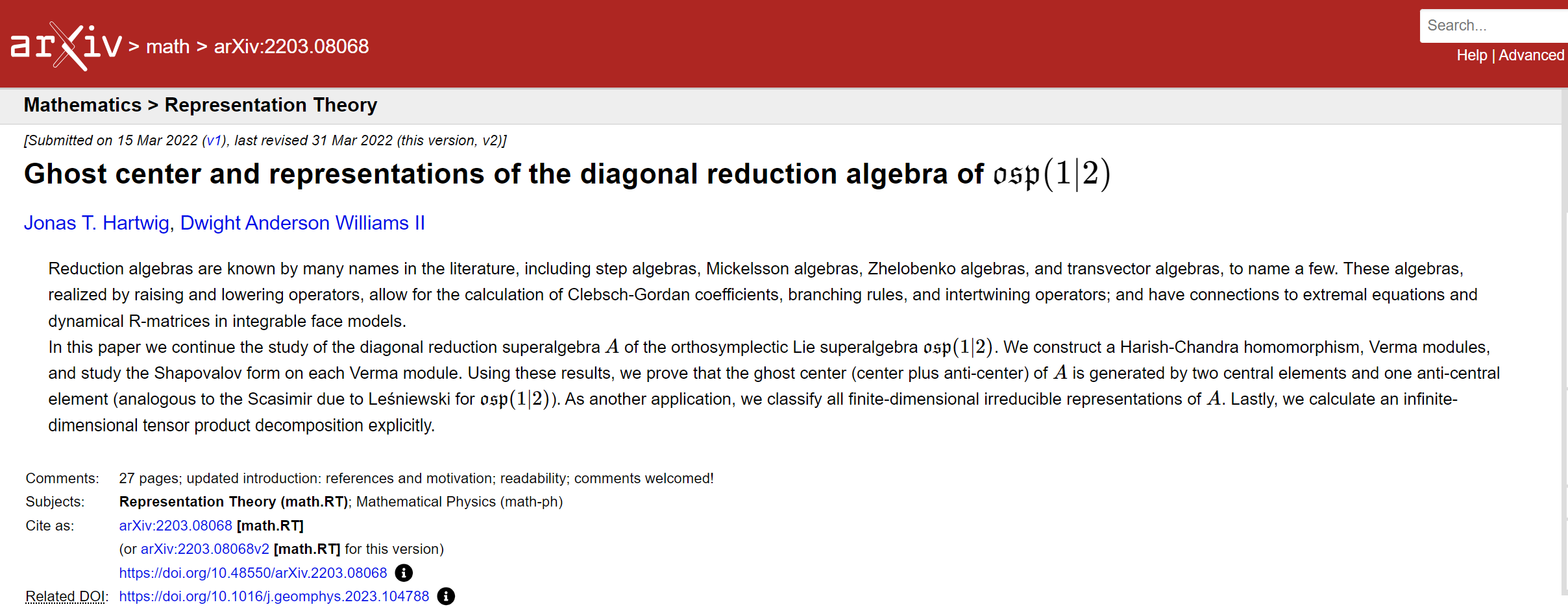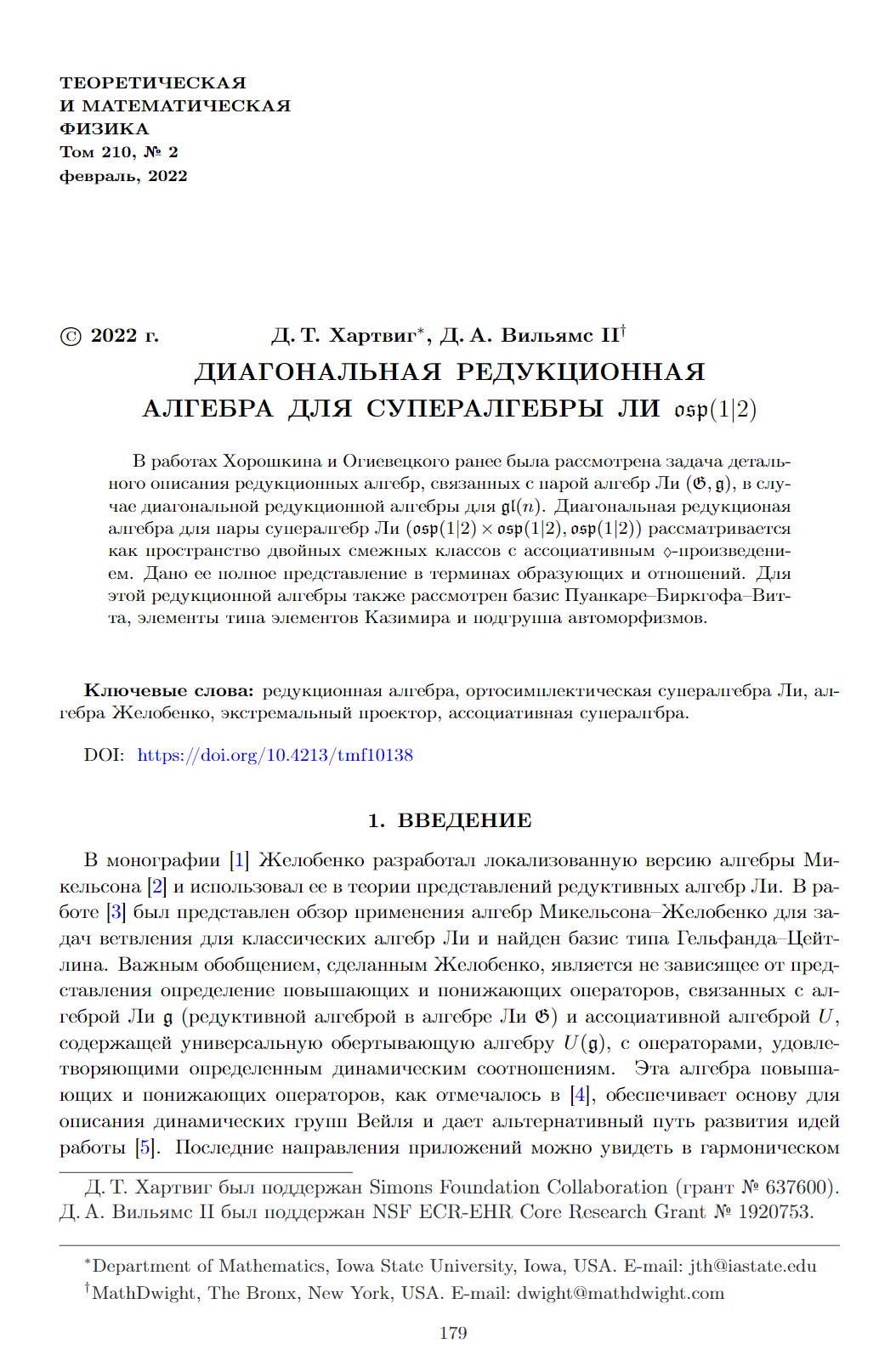Speaker: Dwight Anderson Williams II (Pomona College)
Joint Work: Jonas T. Hartwig
TItle: The semi-differential reduction algebra of sp(4)
Abstract: A reduction algebra Z is an associative algebra that can be realized as a certain quotient of an associative algebra A containing the universal enveloping algebra U(g) of a Lie algebra g. We require a triangular decomposition of g=g−⊕h⊕g+, with nilpotent parts g± and Cartan subalgebra h. Then the representation theory of Z sheds light on the representation theory of g, including calculation/recovery of Clebsch-Gordan coefficients, branching rules, and intertwining operators. The algebra Z is also realized as a space of double cosets carrying an associative product determined by the so-called extremal projector P of g. There is substantial literature on extremal projectors and their applications to reduction algebras when g is gl(n) or of rank one.
In this talk, we demonstrate the extremal projector of the rank two symplectic Lie algebra sp(4); furthermore, using A2 to express the second Weyl algebra, we study Z=D(sp(4)) constructed from a localized version of the tensor algebra A=A2⊗U(sp(4)). We provide generators and relations of D(sp(4)) as an example of a semi-differential reduction algebra.






